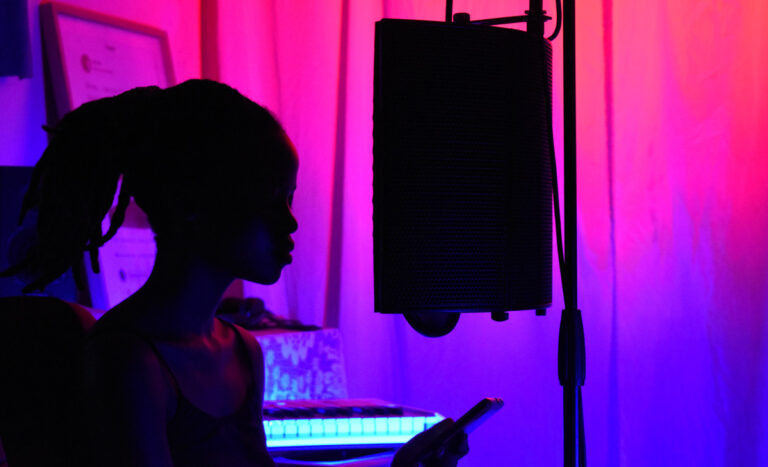Copyright power to the people: how AI music creation start-up Boomy could shake up the music industry

Love them or hate them, Nickleback was right: we do just “all want to live in hilltop houses and drive fifteen cars”… In other words, the music industry equals big money—or at least it does for those at the top of the industry’s food chain. Over the recent years, music publishers have been on somewhat of a spending spree—buying the copyrights for songs of famous musicians at an impressive rate. Last December, Universal Music Publishing Group bought Bob Dylan’s entire discography in a deal estimated at more than 300 million dollars. Similarly, Stevie Nicks sold an 80 per cent share of her works to Primary Wave Music for an estimated 100 million dollars that same month.
These mind-boggling figures are enough to alienate even some of the most experienced music producers. But the very nature of music is built on raw, amateur, DIY creativity. How do we fix such a system that caters heavily towards the elite and establish a model that helps those left out of the system instead—giving everyone a chance to express their musical creativity? That’s where Boomy comes in. The new AI-driven company claims it can shake up the model of the industry. And there’s reason to believe it can.
How does Boomy work?
Think of Boomy as a one-button music studio. In essence, the website’s developers claim users will be able to compose original tracks in around five to ten minutes—selecting their desired style of beat, tinkering with the composition and mix until it’s club-ready. Whether you’re feeling dance, hip-hop, ‘global grooves’ or just something completely experimental, Boomy has you covered, giving you the option to upload your finished musical piece to over forty streaming or social platforms. Oh, and did I mention that you keep a large chunk of royalties to your new hit?
Although being able to create a banger in the time it takes for your Pot Noodle to brew is appealing, it’s not the only reason which sets Boomy apart from the crowd—the real reason being its AI. Unlike recurrent neural network analysis models like OpenAI or Google, which can analyse songs already made and are able to recreate a signature sound, Boomy is not trained on copyrighted music. This is due to the complex, strict and high-segmented nature of copyright law—varying greatly depending on which part of the world you’re currently residing in.
Training AI on already copyrighted material could throw a major spanner in the works in terms of legality. Take the infinite monkey theorem, for example: if the AI was used to create a hip-hop track and learnt from Biggie Smalls, there’s a chance (however small that may be) that the algorithm could perfectly recreate ‘Juicy’—beat for beat. That’s a risk no app developer would ever want to take.
To overcome this hurdle, the AI behind Boomy takes a bottom-up approach by leveraging previous experience in artists and repertoire (A&R) research to train the system to build organic, original compositions from scratch. Alex Mitchell, co-founder and CEO of Boomy told Engadget that the company has “really advanced algorithms that are doing automatic mixing, deciding what sound should go together—what are the features of those sounds, how do those fit together, what is the perceived loudness rate of those sounds.” All while keeping within copyright infringement laws. Pretty impressive if you ask me.
But… isn’t it just a bit lazy?
Okay, it’s a good point—and a debate that will definitely cross the minds of bedroom music producers, multi-million dollar label owners and music fans alike. Isn’t this devaluing what it requires, or even means, to be an actual modern-day musician? Those who have spent tens of thousands on university education to study music production, not to mention the hundreds of hours it takes to master the art of the digital audio workstation (DAW), may not take kindly to an app that could be perceived as replacing their talent with a simple tap.
It’s a conundrum that shouldn’t be confined to just the occasional shower thought: to what extent do we allow AI to replace creative arts? To what point does something stop being creative when making music through AI? Can anything made with AI actually be considered creative in the first place?
Taking a step back, it could be considered that this is the natural progression in the evolutionary tree of music production. Even on their wackiest of LSD trips, The Beatles back in the ‘60s would never have dreamt that there would be a global movement of lo-fi bedroom producers, making successful records—not sold but streamed—through just a laptop and an internet connection. Taking this logic, we shouldn’t underestimate the legitimacy of AI-generated music, made in a few minutes, and the impact it could have on the music industry as a whole.
Opening musical doors for those who were previously locked out
Mitchell goes one step further, telling Engadget that he doesn’t view Boomy simply as a music creation tool but as a means to achieve “the ideal world that we want to create.” This would be a world where an individual, wherever they currently reside on the planet, and no matter their economic status, can register themselves as a co-writer alongside Boomy, ensuring all artists are able to be paid for their work.
He describes this concept almost as if they’ve “built a music studio, and filled it with great equipment. You can come in and use it for free, make whatever you want, and on your way out, we’re assigning you to our label, and we’re going to give you an 80 per cent rev share on everything we collect from what you made in the studio.”
In fact, there is good reason to believe this added level of accessibility could allow for more creativity. As of now, there is still a barrier for entry into the world of music production, especially for working-class individuals—albeit the bar has become significantly lower due to the technology-induced shift from the studio to the bedroom. Consequently, Boomy could offer an accessible solution, opening the doors of musical creativity for people who were previously locked out.





